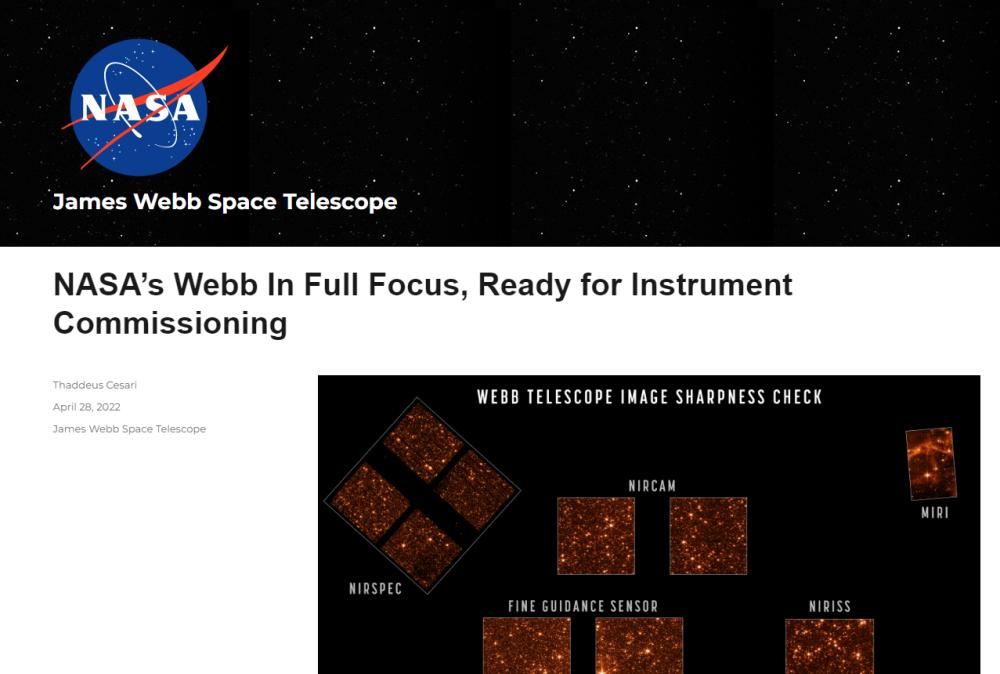IT House May 2 news that NASA's James Webb Space Telescope has completed calibration on April 28, and after a comprehensive review, the four scientific instruments of the Webb Space Telescope can take sharp, well-focused images.

The James Webb Space Telescope is about to commission scientific instruments, a process that will take about 2 months, after which the scientific operation will begin.
First, the Webb Space Telescope's "full calibration" means that each instrument can now begin to collect more light from space.
In this drawing, each engineering drawing shows one of Weber's instruments "perfectly aligned and focused" with the telescope. Of course, what we see in the graph is actually part of the Great Magellanic Cloud, which is just an irregular small galaxy in the Milky Way.
▲ Source: NASA
The size and position of the images represent the relative arrangement of each instrument on the plane on which the Weber telescope is focused. You may find that the "stars" pointed at by each instrument are slightly offset from the other parts.
Just like the previous drawing, the red background of this "mosaic" is designed to optimize the display and enhance contrast. It is worth mentioning that the colors in the images of space telescopes sometimes show what everyone's eyes actually see, but they also sometimes show their "enhanced" characteristics.
IT House learned that the imaging instruments installed on Weber were NIRCam, NIRISS and MIRI.
It is reported that miri sees "mid-infrared light" instead of "near-infrared light" like others, so you can see interstellar clouds and brilliant starlight in its images! The other NIRSpec is a spectrometer rather than an imager, but it can also be used to take images for calibration and target acquisition.
By the way, some friends may be curious about what the "black belt" in the figure is, which is mainly due to the unique design of its micro-shutter array structure, similar to a miniature shutter, which allows it to capture data from 100 objects at the same time.
The part tied to NIRISS is Weber's Fine Guidance Sensor (FGS), which precisely tracks the "guide star" and points more precisely to the observatory. Although it also has two sensors, it is not usually used for scientific imaging, and generally just takes such calibrated images.
The telescope's optical performance continues to outperform the engineering team's most optimistic predictions. From this point of view, the only changes to the mirror will be very small, adjusting the main mirror segment regularly.
In Weber's next and final steps, instrument calibration, dedicated tools for each instrument (masks, filters, lenses, etc.) will be configured and operated in various combinations. This will allow us to confirm that they are ready for scientific operation this summer.
According to NASA, Weber's next phase, the seventh and final phases, will be the "instrument calibration" phase, in which each instrument and its specialized tools (masks, filters, lenses, etc.) will be configured and operated in various combinations, and will be ready for scientific exploration this summer (about two months).